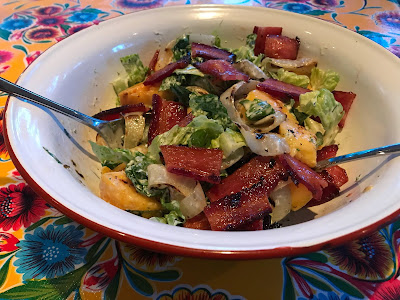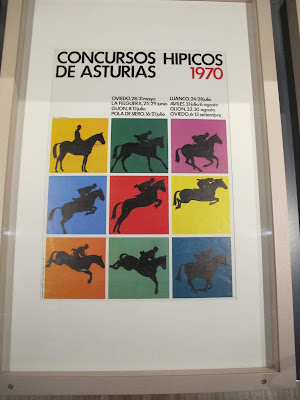In Barcelona's new tech district near Placa de les Glories Catalanes in the Poblenou neighborhood is the stunning skyscraper, Agbar Tower which is named after its owners. This enormous bullet-shaped building has become one of the symbols of contemporary Barcelona with it glass-tiled facade.
To the left of Agbar Tower is the Museu del Disseny. Completed in 2014 and located in a neo-Brutalist building affectionately nicknamed "The Stapler," Barcelona's new design museum brought four collections together under one roof, thus creating a collection that is quite stunning.
The building was originally owned by the multi-national group the Sociedad General de Aguas de Barcelona (Agbar), a Spanish company dedicated to services, distribution and treatment of water, which has its corporate headquarters in the building. Agbar Tower was purchase for 165 million Euros in 2010 by the investment group, Azurelau. By 2017, Merlin Properties real estate group bought the property and the name was changed to Torre Glories after the adjacent square.
Agbar Tower was designed by French architect Jean Nouvel. Construction began in 1999 and was completed six years later in 2004. Inspiration for the design came from many places in Spain. The shape of the building came from Montserrat Mountain's smooth cliffs and Antonio Guadi's Sagrada Família's bell towers. The phallic shape of the building has earned it many nicknames. One being "El Supositori", the suppository.
Thirty-eight stories high, it stands 144 meters tall (468 feet) with several levels underground making it the third tallest building in Barcelona. The cost, 133 million Euros to build. It has an oval, almost circular base with an open-air, spacious interior with no pillars. The inner wall layers that cover the concrete building is made of polished aluminum. The outer shell consists of 60,000 different-colored glass (40 colors to be exaxct) louvers for the 4,400 widows that can be tilted at different angles creating an iridescent glow. The menagerie of the colored glass tiles came from Guadi's creative mix of his tiles in his buildings. The color scheme graduates from the warmer reddish tones up to the cooler, midnight blues and whites at the top.
In the evenings, the tower really comes alive at it is lit up with 4,500 LED lights that are able to produce over 16 million different colors across the entire facade.
Nouvel used solar power and groundwater to reduce energy consumption along with exterior temperature sensors that regulate the opening and closing of the glass sheets.
Children jumping from one colored block to another. Again, the color scheme complimenting the building's facade. The tower has become a popular gathering place for residents and tourist on New Years Eve.
The view of the city with the Agbar Tower in the skyline from the rooftop of the Santa Maria del Mar Church.
The view from the top floor at the Museu del Disseny. Both of these breathtaking buildings and a visit to the Santa Maria del Mar Church will be part of my itinerary for my Jewels of Northern Spain tour in September of 2019.
The view of the city with the Agbar Tower in the skyline from the rooftop of the Santa Maria del Mar Church.
The view from the top floor at the Museu del Disseny. Both of these breathtaking buildings and a visit to the Santa Maria del Mar Church will be part of my itinerary for my Jewels of Northern Spain tour in September of 2019.



































































